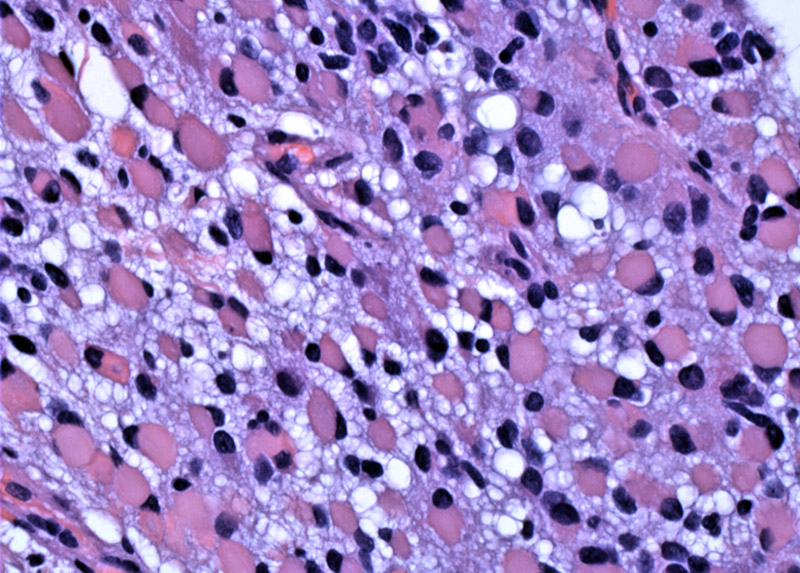System: CNS: Brain: Malignant: Gemistocytic Astrocytoma



Case 1: Gemistocytic astrocytes are evident and comprise the main neoplastic cell type. The fibrillary background typical of astrocytomas can be appreciated.
They have brightly eosinophilic cell bodies, almost rhabdoid in appearance.
This particular case was diagnosed as anaplastic astrocytoma arising from gemistoastrocytoma, probably because the cellularity and pleomorphism is more than a low-grade (WHO grade II) tumor.
Quite high cellularity at low power -- one has to go to higher power to see the gemistocytic astrocytomas.
Astrocytomas can be low-grade/diffuse (WHO grade II), anaplastic (WHO grade III) or glioblastomas (WHO Grade IV). Low-grade or diffuse astrocytomas are further subdivided into fibrillary (most common), gemistocytic and protoplasmic (a disputed subtype).
Gemisto means "to fill" and thus, these astrocytes have cell bodies that are filled with eosinophilic material and have stout processes. Gemistocytes are non-neoplastic reactive astrocytes, whereas gemistocytic astrocytoma designates astrocytomas in which the neoplastic astroctyes assume this particular "gemistocyte" look.
In most cases, gemistocytic astrocytomas are WHO grade II neoplasms, but they can progress into "anaplastic astrocytomas arising from gemistocytic astrocytoma", as in this case. Of course, the tumor will eventually become Grade IV (glioblastoma).